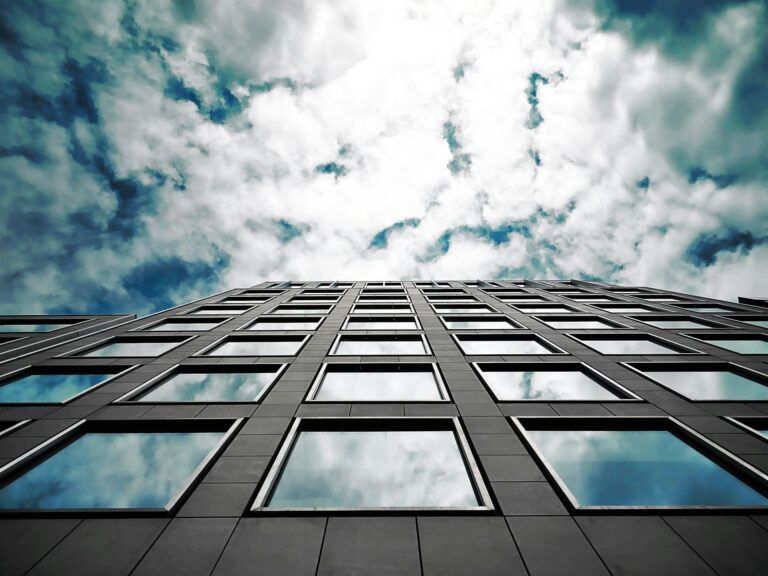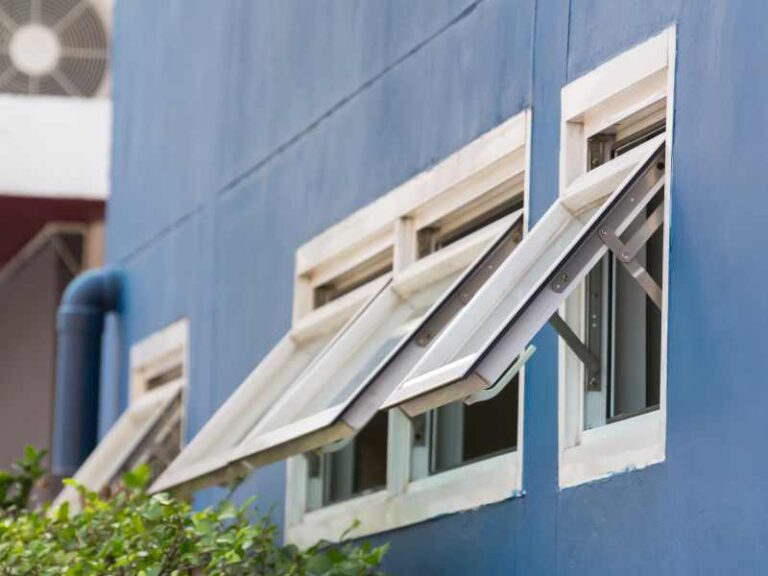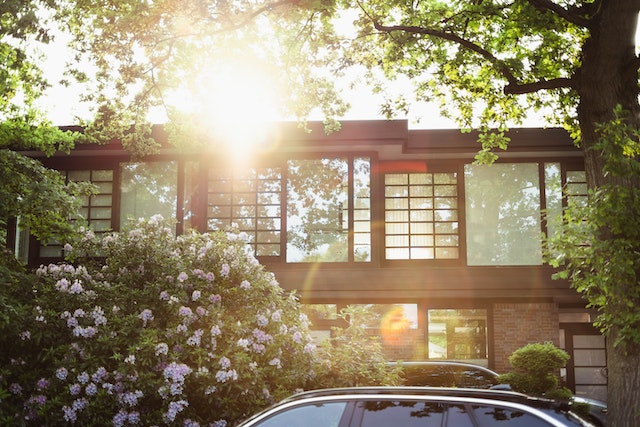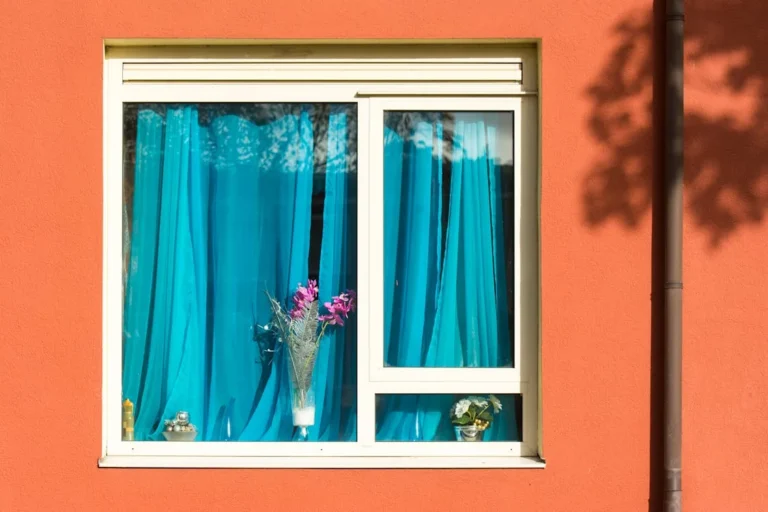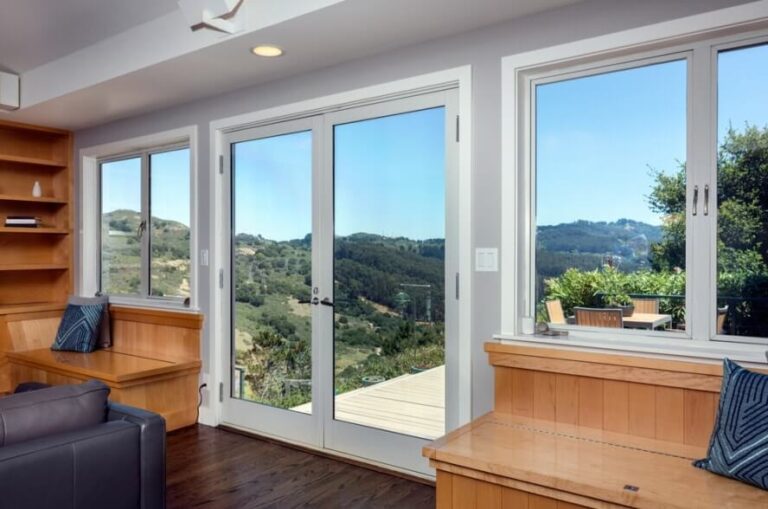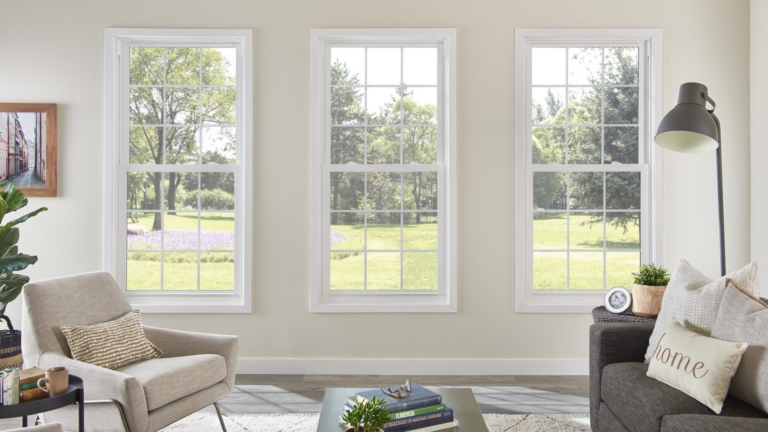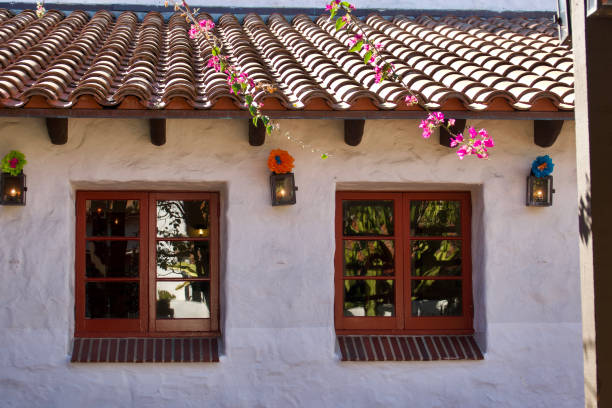
Casement windows, recognized for their ability to swing open like a door, are increasingly popular in modern homes for both their functionality and aesthetic appeal. Whether you choose wood casement windows or vinyl casement windows, the cost of casement windows involves several factors including the window frame material and the specifics of window installation.
When you decide to install casement windows, you might opt for a simple casement window or a larger picture window, both of which require careful consideration during the installing casement windows process. Understanding the intricacies of casement windows cost can help homeowners make informed decisions about what type of window best suits their needs.
Understanding the Costs Involved
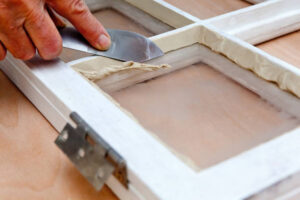
When considering casement windows, understanding the initial costs and the variables that affect the overall expense is key. Here, we delve into the typical casement window prices involved in purchasing and installing casement windows, as well as what might impact the final price.
Breakdown of Casement Window Costs
The cost of a casement window primarily consists of the initial purchase price and installation costs. The initial purchase price can vary significantly based on features such as the number of glass panes. For instance, triple-pane windows often carry a higher price tag due to their improved insulation properties. Installation costs also vary; opting for a professional casement window installation ensures accuracy and longevity, while DIY casement window installation might be cheaper but requires specific skills and tools.
Factors Influencing Price
Several factors can influence the overall cost of a casement window:
- Customization Options
Custom features like special locks, colors, or finishes can significantly increase the casement window costs.
- Size and Design Complexity
Larger and more complex designs, such as picture windows, typically raise the casement window cost due to more materials and labor required.
Comparing Casement Windows with Other Styles
Choosing the right type of window for your home involves comparing various styles not only for their aesthetics but also in terms of cost and functionality. This section explores how casement windows stack up against other popular types like sliding and double-hung windows, helping you understand why they might be the ideal choice despite potentially higher costs.
Cost Comparison with Other Window Types
Casement windows can differ in cost compared to other window types based on several factors:
Sliding Windows vs. Casement Windows
Sliding windows generally cost less per window due to simpler mechanisms and fewer materials. However, casement window installation might offer better energy efficiency, which could lead to savings over time.
Double-Hung Windows vs. Casement Windows
Double-hung windows, known for their traditional appearance and versatility, often have a lower initial cost than casement windows. Yet, for ventilation and ease of cleaning, casement windows often provide more value, despite the higher price.
Why Choose Casement Windows Despite the Cost?
Casement windows offer several unique advantages that might make them worth the investment:
1. Enhanced Ventilation
Casement windows open fully outward, unlike sliding or double-hung windows, providing superior airflow and ventilation.
2. Unobstructed Views
With fewer bars and frames, casement windows offer a clear view of the outdoors.
3. Energy Efficiency
The seal on casement windows is tighter when closed compared to that of sliding or double-hung windows, making them more energy-efficient.
4. Security
The locking mechanism of a casement window is typically more robust, providing better security.
Cost of Casement Windows by Material
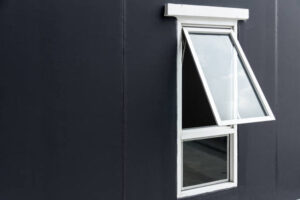
After exploring how casement windows compare to other styles in terms of functionality and aesthetics, it’s also important to consider the different materials available and how they affect the overall cost and performance. Each material offers unique benefits and comes with varying price points, making it essential to evaluate which type best suits your needs and budget. This section provides a detailed overview of the most common materials used for casement windows, including wood, vinyl, aluminum, and fiberglass, helping you make an informed decision that aligns with the advantages discussed in the previous section.
Wood, Vinyl, Aluminum, and Fiberglass Options
Each material used in casement windows has its own set of advantages and considerations:
Wood Casement Windows
Known for their traditional charm, wood windows require regular maintenance to prevent damage from elements. Though they offer a classic look, the need for frequent upkeep might deter some homeowners.
Vinyl Casement Windows
These windows are praised for their durability and low maintenance requirements. While vinyl may not offer the same aesthetic appeal as wood, it provides excellent insulation and is cost-effective.
Aluminum Casement Windows
Aluminum is lightweight and resistant to corrosion, making it a good choice for many climates. However, its thermal performance is lower, which may not make it the best option for areas with extreme temperatures.
Fiberglass Casement Windows
Offering high durability and energy efficiency, fiberglass is among the top choices for energy efficient windows. However, it tends to be on the pricier side, reflecting its superior quality and longevity.
Comparison of Material Costs and Benefits
Here’s a quick look at the average cost range for each type of material, reflecting both the lower and upper price brackets:
- Wood: $260 – $2,000. Wood casement windows secure a timeless appeal but can be costly, especially if opting for high-end wood or custom designs.
- Vinyl: $200 – $780. Vinyl is an economical choice for those seeking energy efficiency and durability without the high price tag.
- Aluminum: $200 – $1,180. Suitable for those in milder climates, aluminum frames are cost-effective and require little maintenance.
- Fiberglass: $535 – $1,575. Although more expensive, fiberglass offers exceptional performance and can mimic the look of a picture window with casement or a single frame casement window, adding to its value.
Cost-Saving Tips for Casement Window Installation
After determining the best material for your casement windows, finding ways to reduce installation costs becomes the next crucial step. Smart choices about when to buy and whom to hire can significantly cut expenses without sacrificing quality. This section will guide you through selecting the right vendor and identifying the optimal time to make your purchase.
1. Choosing the Right Vendor
Choosing a reputable vendor is essential for ensuring both quality and cost-efficiency in your casement window installation. Look for vendors who specialize in various window types and offer professional installation services. It’s important to assess their expertise with specific features like double pane windows or wood frames. Research their track record, customer reviews, and credentials to ensure they can handle complex needs, such as managing heat transfer in windows with casement flankers or intricate window sash designs.
2. Timing Your Purchase
Timing can significantly impact the cost of purchasing casement windows. Prices often drop during the off-peak seasons like late fall or early winter when demand is lower, which can be an excellent opportunity for savings. Additionally, keeping an eye on market trends is crucial as fluctuations in material costs, such as those for window frames or panes, can also affect prices, offering further opportunities to economize.
Long-Term Value of Investing in Casement Windows
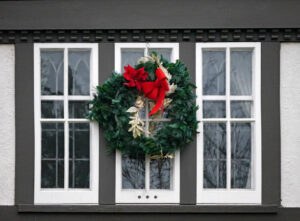
Investing in casement windows not only enhances your home’s aesthetics but also provides long-term value through energy savings and durability. Understanding the efficiency and maintenance requirements associated with casement windows can help you gauge their worth over time, particularly when considering replacements for fixed windows or optimizing your window opening configurations.
Energy Efficiency and Savings
Casement windows are known for their superior sealing capabilities, which can potentially reduce energy bills by minimizing air leakage. The design of a single casement window allows it to seal tightly against the window frame, enhancing its thermal efficiency. Furthermore, advancements in window glazing contribute significantly to energy conservation, ensuring that size casement windows maintain interior temperatures by reflecting heat during the summer and retaining warmth during the winter.
Durability and Maintenance Costs
The expected lifespan of casement windows varies with the material used. Common casement window size in materials like vinyl and fiberglass are particularly durable, requiring less frequent replacement compared to traditional wooden frames. For longevity, consider the following maintenance tips:
- Regular Cleaning: Keep the window panes and frames clean to prevent dirt buildup that can impair function.
- Seal Checks: Regularly inspect the seals around the window opening to ensure they are intact, which helps prevent drafts and moisture entry.
- Lubricate Hinges: Lubricating the hinges and opening mechanisms of replacement windows can prevent wear and enhance ease of use.
Aesthetic and Functional Benefits
Casement windows not only improve a home’s energy efficiency but also offer significant aesthetic and functional advantages. These windows can transform both the interior and exterior appeal of your home while enhancing usability and comfort. This section will explore how casement windows can elevate your home’s aesthetics and functionality, making them a valuable addition to any window project.
Enhancing Home Aesthetics with Casement Windows
Casement windows can dramatically boost your home’s curb appeal thanks to their elegant design and the variety of styles and finishes available. Whether you’re updating old, single-pane windows or considering new construction windows, casement windows offer a clean, streamlined appearance that can complement any architectural style. Their ability to be part of a larger window configuration, like bay windows or multiple windows setups, allows for customization that can enhance the overall aesthetic of your home.
Functional Benefits
The functional benefits of casement windows make them an excellent choice for any living space:
- Ease of Use and Accessibility: Casement windows, being operable windows, are designed for easy operation with a simple crank mechanism that is ideal for hard-to-reach areas.
- Improved Ventilation and Natural Light: These windows open fully and outward, unlike traditional storm windows or sliding windows, allowing for maximum airflow and light entry. This makes them particularly useful as an egress window in bedrooms or basements, where safety and comfort are paramount.
How to Install Casement Windows

Installing casement windows can revitalize your home’s interior and exterior, offering a fresh look and improved functionality. Whether you’re tackling the project as a DIY or planning to hire a professional, understanding the process and knowing what to look for in a service provider are key steps. This section provides a clear guide on both installing the windows yourself and choosing the right professional window installer for the job.
Step-by-Step Guide to DIY Installation
For those ready to install casement windows themselves, here’s a straightforward approach to ensure successful installation:
1. Measure the Window Opening and Prepare the Site
Accurately measure the opening to ensure the new window will fit perfectly. Prepare the site by cleaning the area and ensuring it’s free of debris.
2. Remove the Old Window and Dispose of It
Carefully remove the existing window, taking care not to damage the surrounding materials. Properly dispose of the old window, especially if it’s a single hung window or larger windows.
3. Install the New Window and Ensure Proper Sealing
Place the new casement window, which should swing outward, into the opening. Secure it firmly and make sure it’s level. Apply caulking around the window to ensure it’s well-sealed against weather elements.
4. Test the Window for Proper Operation
After installation, test the window to ensure it opens and closes smoothly. Check for any gaps in the seal and adjust if necessary.
Tips for Hiring a Professional Installer
If you decide to hire a professional for your window installation, here are some tips to find the right contractor:
- Research Local Installers and Read Reviews
Start by researching window companies that specialize in new construction windows or the specific window type you’re installing. Read reviews to gauge the quality of their work and customer satisfaction.
- Get Multiple Quotes and Compare Prices
Contact several installers to get quotes. This will give you a better idea of the average replacement cost and help you budget accordingly.
- Check for Licenses and Certifications
Ensure the installer is licensed and certified, which guarantees that they meet professional standards. This is crucial for professional installation costs and quality assurance.
Casement Window Add-Ons and Upgrades
Enhancing your casement windows with various add-ons and upgrades can significantly improve their functionality, energy efficiency, and aesthetic appeal. Whether you are installing new windows or upgrading an existing window, understanding the options available can help you make informed decisions that boost both the value and performance of your casement windows.
Glass Coatings and Tints
Incorporating advanced technologies in your window glass can make a big difference in how your windows perform:
- Low-E Coatings
Applying Low-E (low emissivity) coatings can enhance the energy efficiency of casement windows by reflecting infrared light, keeping your home warmer in the winter and cooler in the summer. This upgrade can affect casement window costs but offers significant savings on energy bills.
- Tints
Window tints are not just for aesthetics; they can reduce glare and increase UV protection, making the interior of your home more comfortable and protecting furnishings from sun damage.
- Gas-Filled Windows
For those looking for superior insulation, gas-filled windows, which contain inert gasses like argon between the panes, provide better thermal efficiency than traditional air-filled windows. This option is available in various casement window types, including triple pane windows and custom casement windows.
Gas-Filled Windows and Insulation
Enhancing the insulation of your casement windows using gas fills is a practical step toward higher energy efficiency:
- Argon and Krypton Gas
These gasses are commonly used in insulated glazing to reduce the heat transfer through the window. Argon is cost-effective and works well with standard window sizes, while krypton is more efficient but typically used in narrower spaces.
- Insulation Improvements
By reducing heat transfer, these gas-filled windows help maintain consistent indoor temperatures, leading to lower heating and cooling costs. This can be a key factor when considering the casement windows cost per window, especially in climates that experience extreme temperatures.
Saving on Casement Windows Cost
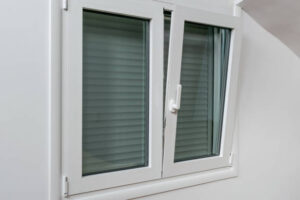
Investing in casement windows doesn’t have to break the bank. By understanding the various factors that influence their cost, you can take strategic steps to ensure you get the best value without compromising on quality. This section outlines effective strategies to minimize the expenses associated with purchasing and installing casement windows.
5 Ways to Reduce Casement Window Costs
Lowering the cost of casement window is possible with a few practical approaches:
1. Shop During the Off-Season
Purchasing windows in the off-season can lead to substantial savings as demand is lower and suppliers may offer discounts.
2. Consider Standard Sizes and Materials
Opting for standard sizes and less expensive frame materials can significantly reduce costs. Custom sizes and premium materials like those used in picture windows with casement or egress casement windows generally come at a higher price.
3. DIY Installation
For those skilled in home improvements, DIY installation can cut costs substantially compared to hiring professionals. However, ensure you understand how casement windows work to avoid potential errors that could lead to more expenses.
4. Look for Energy-Efficient Options
Investing in energy-efficient windows, such as those with double pane glass or heat transfer reducing technologies, can reduce heating and cooling costs over time, making them worth the initial investment.
5. Bundle with Other Window Installations
If you plan to replace multiple windows, bundling them can often reduce the average cost per window, as many installers offer discounts for larger projects.
Energy Efficiency and Savings
Choosing energy-efficient casement windows not only lowers heating and cooling costs but also enhances the comfort of your home’s interior:
Windows that improve the window’s energy efficiency, such as those with Energy Star certification, are designed to minimize heat loss and gain, which can significantly lower energy bills.
- Energy Star Certification
Look for windows with Energy Star certification, which indicates they meet or exceed federal guidelines for energy efficiency.
- Upgrade to Triple-Pane Windows
Although more expensive upfront, triple-pane windows offer superior insulation compared to single or double-pane options, making them a worthwhile investment for those living in extreme climates.
In Summary
Throughout this guide, we’ve explored the various aspects of casement windows, from the initial costs associated with different window frame materials to the benefits of installing energy-efficient triple pane or custom casement windows. We’ve discussed choosing the right type for your needs, whether it’s a picture window or a single frame casement, and how these choices affect factors like heat transfer and overall energy efficiency. As you consider upgrading or installing new windows, remember that casement windows offer a blend of aesthetic appeal and functional efficiency, enhancing both your home’s interior and comfort.
Elevate your home’s comfort and style with the superior design and efficiency of casement windows from Scottsdale Window Replacement & Doors.
Contact us today to discover the perfect window solutions that blend seamlessly with your lifestyle and enhance your living space!

